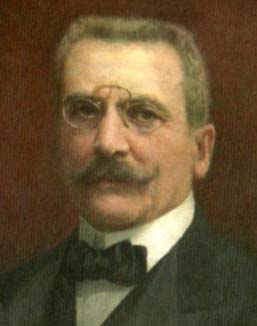

تاريخ الرياضيات

الاعداد و نظريتها

تاريخ التحليل

تار يخ الجبر

الهندسة و التبلوجي


الرياضيات في الحضارات المختلفة

العربية

اليونانية

البابلية

الصينية

المايا

المصرية

الهندية


الرياضيات المتقطعة

المنطق

اسس الرياضيات

فلسفة الرياضيات

مواضيع عامة في المنطق


الجبر

الجبر الخطي

الجبر المجرد

الجبر البولياني

مواضيع عامة في الجبر

الضبابية

نظرية المجموعات

نظرية الزمر

نظرية الحلقات والحقول

نظرية الاعداد

نظرية الفئات

حساب المتجهات

المتتاليات-المتسلسلات

المصفوفات و نظريتها

المثلثات


الهندسة

الهندسة المستوية

الهندسة غير المستوية

مواضيع عامة في الهندسة

التفاضل و التكامل


المعادلات التفاضلية و التكاملية

معادلات تفاضلية

معادلات تكاملية

مواضيع عامة في المعادلات


التحليل

التحليل العددي

التحليل العقدي

التحليل الدالي

مواضيع عامة في التحليل

التحليل الحقيقي

التبلوجيا

نظرية الالعاب

الاحتمالات و الاحصاء

نظرية التحكم

بحوث العمليات

نظرية الكم

الشفرات

الرياضيات التطبيقية

نظريات ومبرهنات


علماء الرياضيات

500AD

500-1499

1000to1499

1500to1599

1600to1649

1650to1699

1700to1749

1750to1779

1780to1799

1800to1819

1820to1829

1830to1839

1840to1849

1850to1859

1860to1864

1865to1869

1870to1874

1875to1879

1880to1884

1885to1889

1890to1894

1895to1899

1900to1904

1905to1909

1910to1914

1915to1919

1920to1924

1925to1929

1930to1939

1940to the present

علماء الرياضيات

الرياضيات في العلوم الاخرى

بحوث و اطاريح جامعية

هل تعلم

طرائق التدريس

الرياضيات العامة

نظرية البيان
Giovanni Battista Gucci
المؤلف:
P Speziali
المصدر:
Biography in Dictionary of Scientific Biography
الجزء والصفحة:
...
25-2-2017
408
Died: 29 October 1914 in Palermo, Italy

Giovanni Guccia's father was Giuseppe Maria Guccia and his mother was Chiara Cipponeri. Giovanni was born in Sicily into an important wealthy Sicilian family. His father was related to the Marquis of Ganzaria and no expense was spared to give Giovanni a good education. He was educated in Palermo where he not only learnt academic subjects, but he also became an expert horseman and excelled in sports in general.
Guccia began his studies at the university in Palermo but he later undertook research under Cremona in Rome. While a student at Rome, Guccia attended the French Association for the Advancement of Science which was held at Rheims. The paper he read at the meeting in Rheims was on certain rational surfaces and his presentation was highly praised by Sylvester. This was encouragement indeed for the young mathematician beginning his research career.
In 1880 Guccia submitted his doctoral dissertation on a class of surfaces representable point by point on a plane to the University of Rome and after successfully defending his thesis he returned to his native town of Palermo. Appointed to the university there, he began to work out an ambitious research programme. In 1884 he set up Mathematical Circle of Palermo and, being from a wealthy family, he was able to provide all the necessary resources to have the project rapidly become successful. Speziali writes in that, for the new society, Guccia provided [1]:-
... the meeting place, a library and all necessary funds. His generous offer was favourably received, and on 2 March 1884 the society's provisional statutes were signed by twenty-seven members. The goal was to stimulate the study of higher mathematics by means of original communications presented by the members of the society on the different branches of analysis and geometry, as well as on rational mechanics, mathematical physics, geodesy, and astronomy.
The publication for the new society was the Rendiconti del Circolo Matematico di Palermo. Guccia himself had four articles appear in the first volume of this publication, the first on Cremona transformations and a generalisation of a theorem due to Hirst, while the second was on a generalisation of a theorem due to Max Noether. This first volume appeared in four parts: July 1885, September 1886, December 1886, and September 1887. The completed volume was presented by Bertrand to the Académie des Sciences in Paris on 7 November 1887, stating that it was a publication of remarkably high quality. When Guccia's society passed a statute allowing foreign members in February 1888, it had rapidly reached its goal of becoming a top quality international society with a leading mathematical publication.
In 1889 Guccia was appointed to the chair of geometry at Palermo which he held for the rest of his life. He set up a mathematical publishing house in Palermo in 1893 adding further publications to the Rendiconti del Circolo Matematico di Palermo. Guccia became editor of all these publications.
As we have indicated above, Guccia's work was on geometry, in particular Cremona transformations, classification of curves and projective properties of curves. His results published in volume one of the Rendiconti del Circolo Matematico di Palermo were extended by Corrado Segre in 1888 and Castelnuovo in 1897. Speziali writes in [1]:-
Although the majority of Guccia's publications are very short, they all contain original ideas and new relations profitably used by other geometers. This is particularly true of his publications on projective involutions, which laid the foundations for the generalisations of Federico Enriques and Francesco Severi.
Articles: